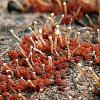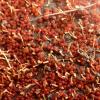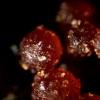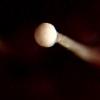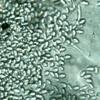
17-12-2025 18:35
 Michel Hairaud
Michel Hairaud
Bonjour à tous/Hi to everyone I am passing along

15-12-2025 15:48
 Danny Newman
Danny Newman
Melanospora cf. lagenaria on old, rotting, fallen

15-12-2025 15:54
 Johan Boonefaes
Johan Boonefaes
Unknown anamorph found on the ground in coastal sa

15-12-2025 21:11
 Hardware Tony
Hardware Tony
Small clavate hairs, negative croziers and IKI bb

15-12-2025 07:09
 Danny Newman
Danny Newman
indet. Rutstroemiaceae sp. on unk. fallen leavesMc

15-12-2025 07:05
 Danny Newman
Danny Newman
Pseudosclerococcum golindoi (det: Zotto)near Cosb

15-12-2025 11:49
 Danny Newman
Danny Newman
ITS sequences from the following two collections B

15-12-2025 12:34
 Danny Newman
Danny Newman
indet. Rhytismataceae on oak leafnear Purchase Roa
Nectria stilbellae
is classified in Nectria subg. Dialonectria SACC.(SAMUELS & al., 1991). Species in this group are characterized by
having superficial, usually smooth, red perithecia the wall of which
is less than 25 urn wide.
Nectria stilbellae is distinguished primarilyby its anamorph and is most closely related to
N. consors (SAMUELS,1977),
N. camelliae (SHIPTON) BOESEWINKEL (SHIPTON, 1979; BOF.SEWINKEL,1982), and the
Nectria species that haveDescription ettsils in: http://www.landesmuseum.at/pdf_frei_remote/Sydowia_43_0249-0263.pdf
The anamoph, sTilbella aciculosa (ELLIS & EVERHART) SEIFERT have Conidia ellipsoidal-fusiform5—7(-9) x 2.5-3 microns.
This fungi was reported in Panama and cta RIca by SEifert. in 1985; SEIFERT, K.A. (1985). A monograph of
Stilbella and some allied hyphomycetes. - Stud.Mycol. 27: 1-235.
262

Your fungus looks like Nectria pseudotrichia, what is the size and shape of ascospores?
Christian

Are the ascomata changing of color in 3% KOH or lactic acid? if so, what is this coloration?
Moreover, could you please to say what is the size of conidia and provide an image of the ascospores?
Christian

